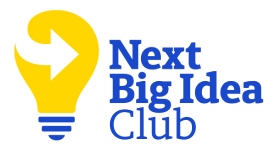Todd Baratz is a licensed psychotherapist and certified sex therapist with over 14 years of experience working with individuals and couples. He also hosts the podcast Our Diagnonsense.
Below, Todd shares five key insights from his new book, How to Love Someone Without Losing Your Mind: Forget the Fairy Tale and Get Real. Listen to the audio version—read by Todd himself—in the Next Big Idea App.
1. Self-awareness begins with your intergenerational story.
Before we can explore our current relational or general life challenges, we must know the intergenerational story of our family. Without this information, we are navigating relational machinery in the dark. All relational dynamics and emotional challenges stem not just from our experiences in the here-and-now but from the unresolved issues of previous generations.
It is important to take a deep dive into our familial histories to uncover and heal patterns that have perpetuated through time, providing a path for breaking cycles of trauma. Acknowledging these hidden narratives fosters understanding and healing across generations.
I explored this with my mother and father, identifying the patterns that have persisted through generations in my family. I also encourage my clients to uncover their own intergenerational stories by interviewing their family members. We often find that we carry narratives that seem uniquely ours, shaped by our personal experiences, but these stories are not entirely our own. Instead, they are inherited: stories about the world, our partners, and ourselves that have been passed down from our parents and their parents before them.
Connecting with these intergenerational experiences allows us to take a broader view of our lives and develop a deeper, more meaningful connection to our life experiences, rather than merely evaluating them against social norms or our immediate emotional reactions.
2. Understanding emotional triggers is key to a better life.
Inherited narratives influence our personal lives and relationships through our own emotional triggers. Emotional triggers (rooted in past traumas) present us with both potential and opportunity if we’re open to uncovering the hidden meanings within. It is important to recognize these triggers, manage them thoughtfully, and utilize them as opportunities for corrective emotional experiences in adult relationships. Doing so also promotes acceptance and compassion through the meaningful interpretation of our emotional responses.
For those unfamiliar with the concept, triggers can be thought of as emotional memories that arise as reactionary responses to present-day events (often involving our adult partners) that parallel deep-seated past experiences. These responses are not arbitrary; they serve as potent reminders of unresolved wounds. Typically, a trigger is activated by something in the current environment—a word, tone, gesture, or smell—that subconsciously recalls a past trauma or deeply embedded fear.
My book guides readers through identifying their triggers, understanding what activates them, and the reasons behind these activations. This knowledge not only aids in managing immediate emotional reactivity that can lead to significant disconnection and unnecessary conflict but also in understanding their origins, which is crucial for long-term emotional and relational growth.
For example, someone who experienced attachment trauma through deep neglect might feel as if a minor disappointment by their partner is a severe betrayal. The intense hurt they feel harks back to early experiences with caregivers. Understanding this dynamic can transform a potential conflict into a chance to share personal histories and build mutual understanding and patience between partners.
“The discomfort we experience when confronting our emotional triggers is not merely an obstacle but a catalyst for growth.”
Approaching triggers with curiosity rather than fear allows us to unravel the layers of our emotional reactions. This process fosters a more empathic view of ourselves and others, helping dismantle the unnecessarily harsh judgments often accompanying triggered reactions. It also creates opportunities for what we therapists call “corrective emotional experiences”—interactions or moments that challenge old patterns and offer new, healthier outcomes, rewiring our brains and demonstrating that past traumas do not have to define current realities.
An example from my own life involves accidentally damaging my partner’s car. I anticipated severe repercussions, similar to the punishments I received as a child for mistakes. However, finding me trying to fix the car in the garage, my partner hugged and reassured me, teaching me that I can make mistakes and still receive love.
This is how we heal in the context of adult relationships. But such healing is impossible without a deeper understanding of our intergenerational trauma and how personal traumas during childhood and adolescence are invariably triggered in the present with partners and dates.
The discomfort we experience when confronting our emotional triggers is not merely an obstacle but a catalyst for growth. By working through the pain these triggers expose, we directly engage with the most vulnerable areas in our lives and, consequently, where there is the greatest potential for personal development. Recognition of pain is a crucial element of growth.
3. Pain is necessary for growth—especially in relationships.
The concept that growth and meaningful relationships emerge from enduring pain and challenges may seem counterintuitive, and indeed, it can be downright disheartening. It’s important to clarify that the type of pain and suffering referenced here does not include abuse or any form of unsafe dynamics. Rather, I am speaking of the everyday disappointments, frustrations, and even moments of hatred we might feel toward others, ourselves, or the world at large.
I propose that life’s ultimate goal is not the conventional pursuit of constant happiness and positivity, but rather, true fulfillment is found through engaging with life’s inherent difficulties and extracting meaning from them. This understanding requires a radical acceptance of pain as a vital opportunity for profound personal growth, urging a shift in perspective from avoiding discomfort to embracing it as a catalyst for deep, transformative experiences. Such a perspective is crucial for building a sense of purpose and deeper connections. Entering relationships with the expectation of unending joy sets us up for greater distress when inevitable disappointments occur. By recognizing that challenges are an intrinsic part of life, we arm ourselves with the tools to handle, understand, tolerate, and effectively work through difficulties. This is the definition of resilience.
Pain—manifested as emotional suffering like disconnection, rupture, loneliness, and the crucial acts of repair or reconnection—fundamentally shapes all relationships. It is through facing and navigating painful experiences (not retreating from them or overreacting) that we achieve growth. Engaging actively with this pain and seeking to comprehend its roots allows us to evolve our personal and relational lives. This process enhances resilience and enriches our understanding of what it means to live fully and love deeply.
4. Relational endings are to be embraced.
There exists a cultural stigma surrounding relational endings. Often viewed as failures or losses, these endings are frequently characterized by a sense of defeat rather than as opportunities for growth and personal discovery. Society celebrates love’s beginnings with anniversaries, weddings, and holidays like Valentine’s Day, yet often ignores, trivializes, and even shames the importance of how relationships end. These endings are just as critical, if not more so, in shaping our lives and personal development.
Life is inherently filled with uncertainty and change. From the finality of death to the heartache of breakups, existence is a continuous flow of beginnings and endings. Yet culturally, we are conditioned to celebrate beginnings fervently while quietly suffering through the grief of endings. This skewed perspective can lead us to view relational endings as personal failures rather than integral parts of life’s narrative.
“An ending is not just a point of closure but a launchpad for growth and renewal.”
I advocate for a major reframe: viewing relational endings as new beginnings, rich with opportunities for development and self-reflection. Despite the pain of endings, each conclusion marks the start of a new chapter. An ending is not just a point of closure but a launchpad for growth and renewal. By recognizing the transformative potential of relationship endings, we challenge the cultural norms that undervalue these experiences.
Every ending paves the way for fresh starts and new connections, allowing the opportunity to build even better relationships. We must learn how to move forward. This includes forming new relationships or even renewing and transforming existing relationships into something stronger and more meaningful.
5. The myth of “The One” and the reality of good enough.
The quest for “The One” has commodified modern love into a shopping experience brimming with high expectations for finding the perfect partner. This pervasive myth champions the belief that we are destined for one ideal match designed to fulfill all our emotional and relational needs. This fantasy sets us up for a cycle of constant disappointment and relational anxiety. Instead of clinging to this unattainable ideal, I advocate for a significant paradigm shift: discarding these unrealistic expectations and embracing the journey of building relationships through effort, understanding, and mutual growth.
Focusing on the messy reality of human connections rather than the polished fantasy sold by media and popular culture allows us to reshape our approach to love and companionship in profound ways. It compels us to mature beyond the simplistic and often juvenile notions of romance that permeate our cultural landscape. By engaging in a process of active learning and application, rather than merely evaluating and intellectualizing potential relationships, we cultivate a presence that fosters deeper connections and reduces relational anxiety.
This mature approach is essential for everyone—whether dating, in short-term or long-term relationships, or even those married for decades. The pervasive anxiety of questioning, Am I with the wrong person? Or Could there be someone better? permeates all relational dynamics. By being present and focused on genuinely learning and connecting, we confront these fears, allowing for stronger, more resilient relationships.
What we truly need is not “The One” but a partner who is good enough. This doesn’t mean settling for less; it means recognizing that no one person can fulfill all our needs. A good enough partner is someone whose limitations we accept while building a fulfilling relationship through shared effort and mutual respect. True companionship comes from an understanding that fulfillment must be found within ourselves first; our partners enhance our lives rather than complete them.
By stepping away from the fairytale narratives, we recognize that true companionship is not found but formed through shared experiences and trials. It requires courage to face the inherent complexities of human relationships and the bravery to let go of neatly packaged ideals. Love, in its truest form, is not marketable because its essence lies in the unique, often challenging, interactions between individuals.
In embracing this reality, we enhance our personal relationships and foster deeper self-understanding. This shift away from idealized projections towards a more grounded, realistic perspective is what truly prepares us for the demands and beauties of lasting love.
Complexity is often undervalued. Let’s shift our focus back to what is truly important in life: meaning and purpose, not merely the pursuit of happiness or quick fixes for problems. This approach encourages a deeper engagement with our lives and the relationships that define them, promoting a richer, more contemplative way of living.
To listen to the audio version read by author Todd Baratz, download the Next Big Idea App today:










